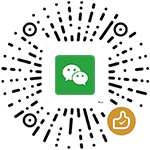
Creating Images Using AI: A Step-by-Step Guide to Midjourney
Author:Julie Pallant (Author)
Publisher finelybook 出版社:CRC Press
Edition 版本:1st edition
Publication Date 出版日期:2024-12-30
Language 语言:English
Print length 页数:166pages
ISBN-10:1032891998
ISBN-13:9781032891996
Book Description
Review
“Creating Images with AI: A step-by-step guide to Midjourney by Julie Pallant brilliantly bridges the gap between traditional photography and the innovative world of Midjourney. Packed with practical tips and stunning examples, it's the ultimate resource for anyone looking to elevate their craft and embrace new creative possibilities.”
Simon Hunter, Photographer, former Professor of Applied Linguistics
“Julie Pallant's book Creating Images with AI: A Step-by-Step Guide to Midjourney is an indispensable tool for creative professionals needing to adapt to the rapidly evolving world of AI image generation. It provides a comprehensive, clear, and thorough guide to the Midjourney program, including detailed practical examples of its many and varied applications.”
Ayesha Hilton, Author, Creator, Entrepreneur
About the Author
Julie Pallant (PhD) is a photographer/digital artist who makes extensive use of artificial intelligence (AI) in creating her artwork and provides an AI training and consultancy service. She has 25 years’ experience as a university lecturer teaching and developing training material on psychology and statistics, including an internationally best-selling statistical computing textbook currently in its 7th edition.
 finelybook
finelybook
